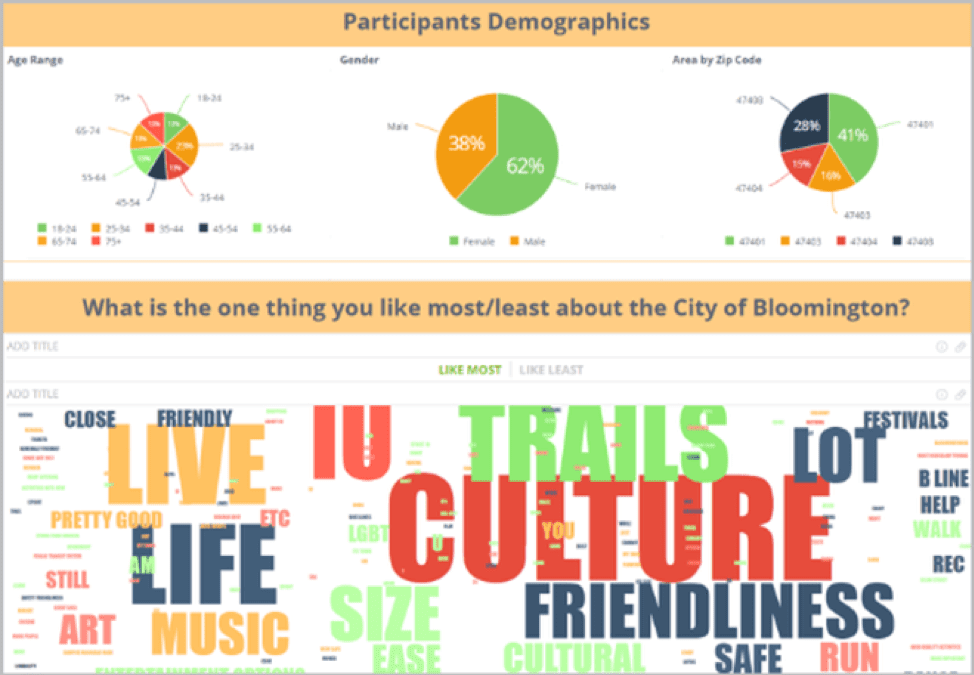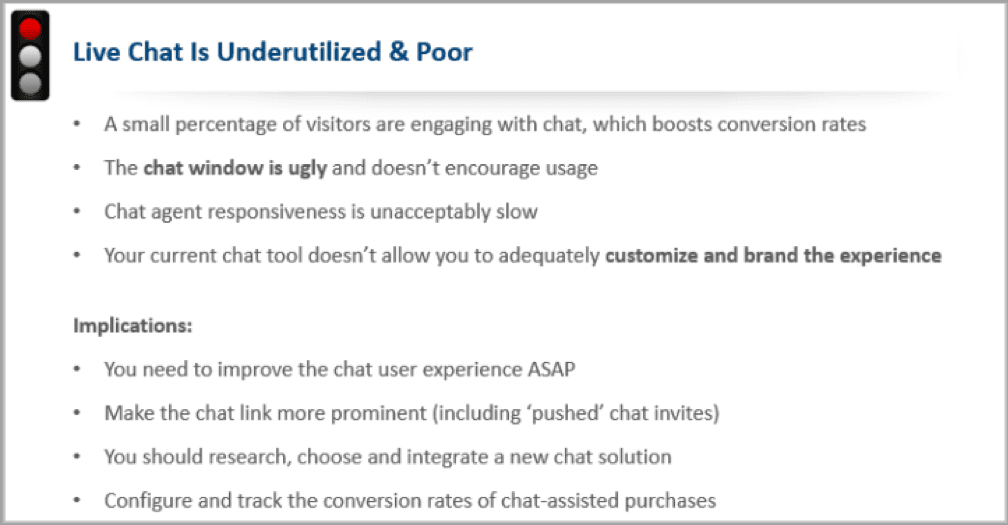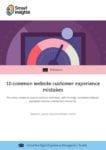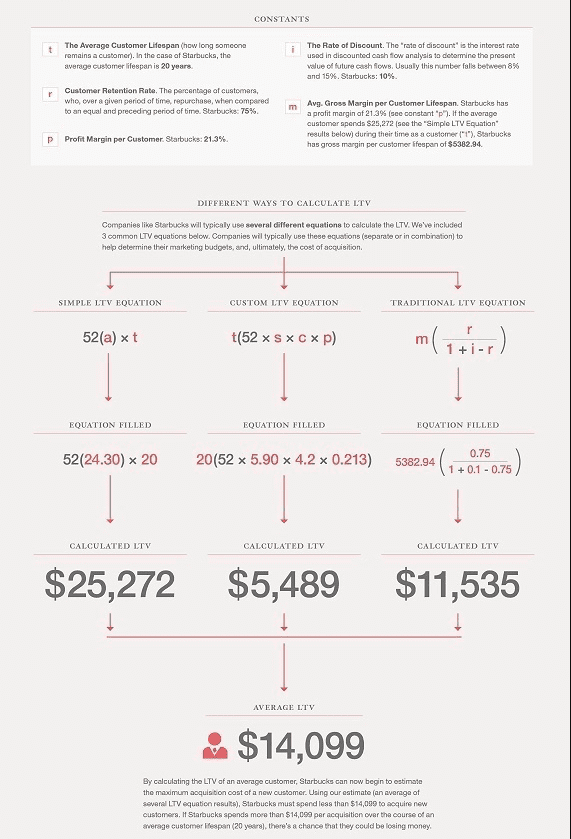Discover your top customer experience (CX) issues quickly
How do your customers, both current and prospective, really feel about the experience they’re having with your brand? How can you best measure this? In this post, I share three cost-effective analysis techniques you can use to get these answers.
I realize it’s more fun to focus on acquiring new customers. It’s satisfying to see those acquisition metrics rise as you capture more visitors through your organic, paid and social campaigns, then nurture them with your content marketing. But if there are any ‘experience or expectation disconnects’ during those first touch points, these prospects may not feel an emotional connection with your brand, and not convert as a result.
Also, it’s much more expensive to acquire a new customer than it is to keep a current one. According to Emmett and Mark Murphy in the book ‘Leading on the Edge of Chaos,’ a 2% increase in customer retention has the same effect as decreasing costs by 10%. For these reasons, you should invest more effort and resources into making your current customers happier than in your acquisition and nurturing efforts.
Consistent with this reality, here I’ll share three analysis techniques that will help you discover what’s dissatisfying your current customers so you can prioritize and fix these issues ASAP.
1. Send an emoji-based survey to your customers
Your current customers, if satisfied enough to become repeat customers, represent a significant customer lifetime value (CLV) to your company. Plug some variables into a CTV calculator and you’ll see how much revenues your customers add up to. In this infographic, Neil Patel summarizes the CLT calculation for SaaS companies.
Knowing this, export a list of your customers, prioritize the list by expected CLV, then send an online survey to at least 5,000 of them. This is so you get at least 200 responses since the typical response rate for surveys sent to existing customers is about 4%.
Make this a quick response, emoji-based survey by:
- Focusing your questions around no more than three parts of your shopping experience (e.g. purchase, delivery, order status).
- Including several emoticons (graphics representing emotions) for your respondents to choose from for each phase.
- Telling the respondent to quickly click the image that reflects how they felt about their experience with your brand during each phase.
- Including a free-form ‘Comments’ field after each question to capture other sentiments.
Don’t forget to send a ‘reminder’ email for the people who gloss over your first survey invite. Also, be sure to mention the intent of the survey and how long it takes to complete (less than 60 seconds is best) to increase your chances of getting more responses.
Include optional Phone Number and ‘Best Time to Call’ fields in your survey. Email all of these customers and ask them for five minutes of their time. When you call the people who responded, first thank them for their feedback. Then, after empathizing with their concerns, ask them what their ideal experience would be during each applicable phase. After analyzing this data, list the key CX issue fixes you need to prioritize on your product/service roadmap.

Keep in mind the goal of your customer experience improvement, not just to satisfy, but to delight your customers (or to at least ‘exceed their expectations’). This may take time, but at least you’ll have started the process.
2. Witness several prospect web sessions
As Peter Sellers, the gardener in the movie ‘Being There’ said, “I like to watch, Eve.” Sometimes pure, unbiased observation is the best ‘analytics’ you can get. Why? Because it’s raw, experiential data. I’ve learned over the years that what people do yields more accurate insights than what they say they’ll do.
The first level of observation is visitor session analytics – recording and watching your prospects – where they’re going and what they’re doing as they enter your web experiences. Most importantly, you’ll see where they’re bailing out. You’ll likely see these trends after watching 30 or 40 sessions.
If you have a bit more time and budget, take your observations to the next level: do a qualitative usability test. Bring in eight to ten people (or even five, if that’s all you have time for). Present them with a few typical scenarios, then watch them use your website to attempt these tasks. Encourage them to ask questions, but don’t answer them until the end of the session. This can be hard to do, especially if you contributed to the design, but you’ll learn much more by doing so.
Jot down what they say and, just as importantly, their body language. I’ve learned over the years that a deep sigh or head nod can tell you as much as a hundred spoken words. After you’ve gathered these data, document your ‘top five’ issues in a summary report.
A few other tips to keep in mind:
- Focus your session recording viewings and user testing around one aspect of your experience. That way you’ll collect more actionable data more quickly.
- When doing a usability test, be sure to use representative participants. Test with people who have the same demographics, experience and mindset as your target customers.
- Test your web designs when they’re in the prototype phase. It’s much cheaper to find and fix issues then than during production.

3. Use text mining apps to discover the souring sentiment
How do you find the customers who are less-than-satisfied with your brand? Asking them is probably not the best option since they’re not as likely to answer. Besides, dissatisfied people often rationalize away their negative feedback – and you want real data, not rationalizations.
Instead, tap into the world of semantic analysis (more commonly called ‘text mining’ or ‘natural language processing’), to discover issues and intents more accurately on a larger scale. Robust semantic mining tools look at all of your data streams (chat, phone, IVR, Web). By intelligently analyzing this data (the bigger, the better), a capable text mining app can glean things like:
- Whether a given customer is likely to buy again, and what they’ll buy (the predictive part).
- Their top questions and concerns.
- Their impression of your brand (including effect, in some cases).
- The last issue she experienced, and it’s status (resolved or not).
Get one of these tools and connect it with all of your customer contact channels so you can get a complete picture of each customer’s attitude about your brand. Because only when you know which customers are at risk of churning can you proactively address their concerns.
If you can, prioritize your at-risk customers by sentiment score and customer lifetime value (CLV). Give customers with the lowest sentiment scores and highest CLT the most attention. Remember, ‘neutrals’ are included in the ‘passives’ bucket for Net Promoter Scores (NPS), so do not neglect these customers as they may actually be easier to re-engage.
Example: Using NLP analytics at a telecom company
Contact centres produce a huge quantity of valuable information. In fact, in larger enterprises, call recordings can generate as much as one Terabyte of data every day. Much of this data, however, is unstructured (primarily free-text fields and voice recordings) or hidden in log files. As a result, companies have historically struggled to tap into its value.
The Boston Consulting Group helped a Southeast Asian telecommunications company use natural-language processing (NLP) software to gain insights into customer behavior, including the reasons for calls, calling patterns and general customer sentiment about the brand. As a result, the company was able to determine that 45% of customer contacts could be automated through digital channels or avoided entirely.
This revelatory insight allowed the company to augment its human call center staff with automated, ‘bot-based’ agents, thereby saving the company hundreds of thousands of dollars while at the same time speeding up response times.

Dig deeper with a CX audit or analytics suite
The above analytics constitute a ‘starter set’ for finding your customer experience issues. If you have more time, budget and technical resources, consider doing a comprehensive CX Audit or investing in a voice of customer (VOC) or CX data analysis platform.
You can also find out how to do a comprehensive CX audit, as well as discover the top features to look for in a customer listening platform in order to improve your knowledge.
Fast and cheap CX analytics yields great insights
You don’t need to spend a lot of time or use expensive analytics platforms to identify the ‘holes’ in your customer experience. By using the qualitative and quantitative analytics I’ve outlined here, you and your team can quickly get a picture of the CX issues you need to fix.
By understanding exactly what aspects of your experience are causing your customers the most mental anguish, you’ll have the confidence to specify experience design fixes, or specify split tests you want to run). As a result, you’ll soon see your revenues rise.

